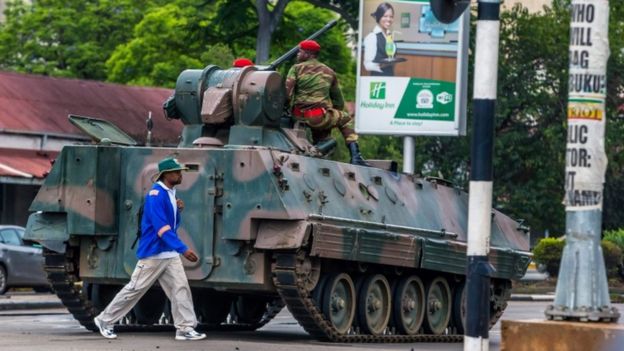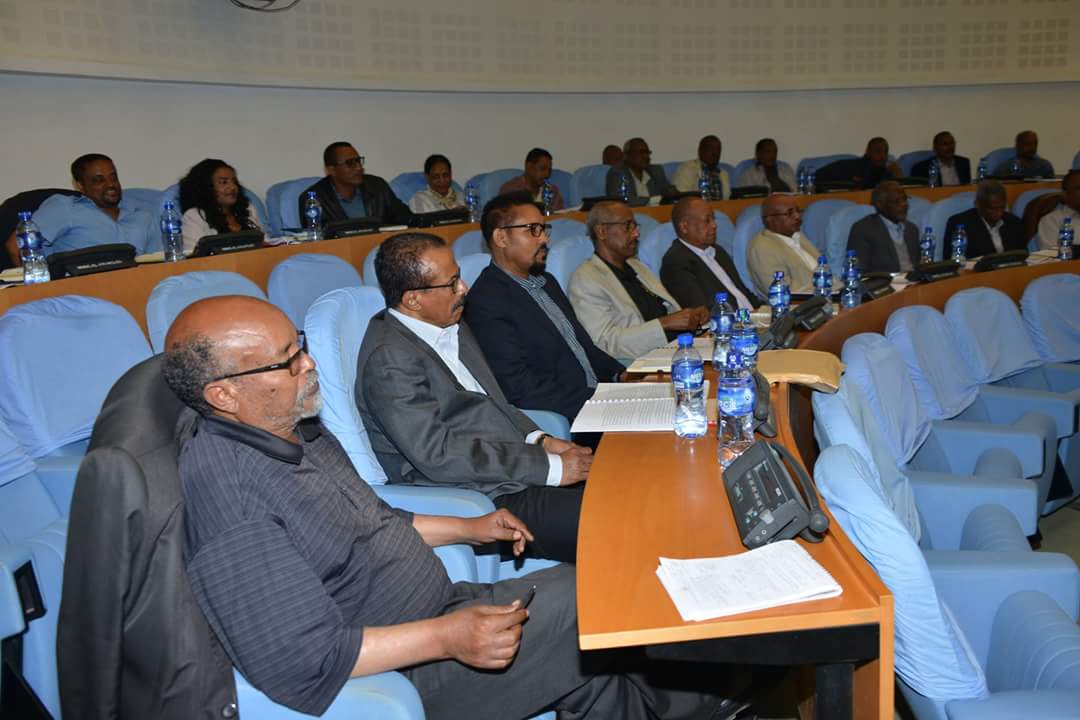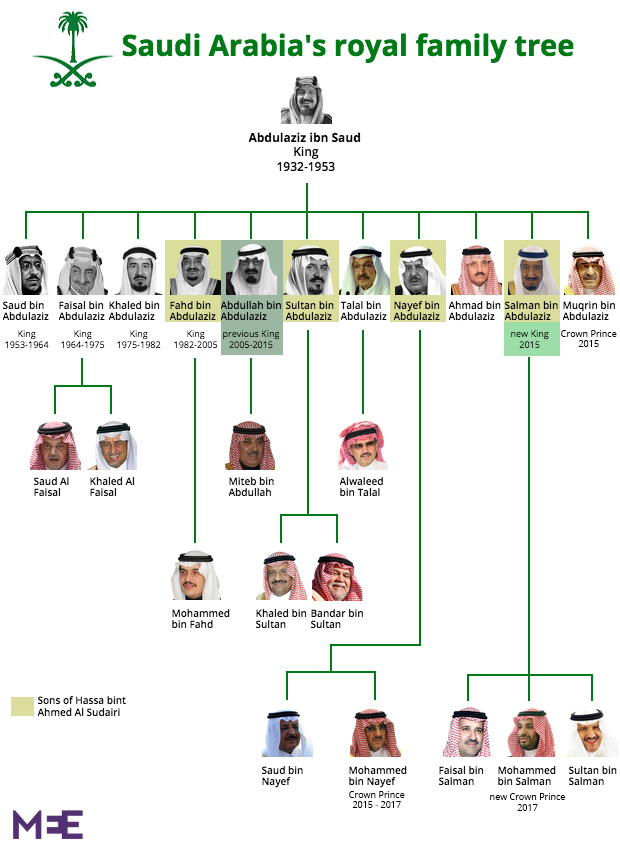Middle Easter
Several detainees taken to hospital with torture injuries, while sources tell MEE scale of crackdown is bigger than authorities have revealed
![]()
Crown Prince Mohammed bin Salman has overseen arrest of hundreds of people, including senior royals, ministers and tycoons (AFP)
Some senior figures detained in last Saturday’s purge in Saudi Arabia were beaten and tortured so badly during their arrest or subsequent interrogations that they required hospital treatment, Middle East Eye can reveal.
People inside the royal court also told MEE that the scale of the crackdown, which has brought new arrests each day, is much bigger than Saudi authorities have admitted, with more than 500 people detained and double that number questioned.
Members of the royal family, government ministers and business tycoons were caught up in the sudden wave of arrests orchestrated by Crown Prince Mohammed bin Salman, known as MBS, under the banner of an anti-corruption drive.
Some, but not all, of the top figures arrested were singled out for the most brutal treatment, suffering wounds to the body sustained by classic torture methods. There are no wounds to their faces, so they will show no physical signs of their ordeal when they next appear in public.
Some detainees were tortured to reveal details of their bank accounts. MEE is unable to report specific details about the abuse they suffered in order to protect the anonymity of its sources.
The purge, which follows an earlier roundup of Muslim clerics, writers, economists and public figures, is creating panic in Riyadh, the Saudi capital, particularly among those associated with the old regime of King Abdullah, who died in 2015, with power then passing to his half-brother, King Salman.
Many fear the primary purpose of the crackdown is a move by MBS to knock out all rivals both inside and outside the House of Saud before he replaces his 81-year-old father.
On Wednesday night, seven princes were released from the Ritz-Carlton Hotel in Riyadh, where they had been held since Saturday. The top royals have been moved to the king’s palace, sources told MEE.
The crown prince’s cousin, Mohammed bin Nayef, who continues be under house arrest, has had his assets frozen, the Reuters news agency reported. Sons of Sultan bin Abdulaziz have also been arrested and had their assets frozen.
![]() Prince Bandar bin Sultan, the former Saudi ambassador to the US, pictured here in 2007, is among those arrested (AFP)
Prince Bandar bin Sultan, the former Saudi ambassador to the US, pictured here in 2007, is among those arrested (AFP)One of the most famous is Prince Bandar bin Sultan, a former Saudi ambassador to Washington and confidant of former US president George W Bush.
Saudi authorities said that one of the corruption cases they are looking at is the al-Yamamah arms deal, in which Bandar was involved. But Bandar himself is not under arrest and living in Jeddah, a source told M
Bandar bought a hamlet in Oxfordshire, in a picturesque area of central England, and a 2,000-acre sporting estate with part of the proceeds from kickbacks he received in the al-Yamamah arms deal, which netted British manufacturer BAE £43bn ($56.5bn) in contracts for fighter aircraft.
As much as $30m (£15m) is alleged to have been paid into Bandar’s dollar account at Riggs Bank in Washington and the affair led to corruption probes in the US and UK, although the case was dropped in the UK in 2006 after an intervention by then-prime minister Tony Blair.
Also among those arrested is Reem, the daughter of Al-Waleed bin Talal, the only woman to be targeted in the latest roundup.
Bank accounts frozen
To prevent others from fleeing, MBS has ordered a freeze on private bank accounts. The number of account closures and those banned from travel is many times the number of people who have been arrested, sources in Riyadh told MEE.
No one expected a crackdown of this scale and against princes of such seniority in the House of Saud, which is why so many of those detained were caught red-handed and had no time to flee.
![]() Many of those arrested are being held at Riyadh’s Ritz-Carlton hotel (AFP)
Many of those arrested are being held at Riyadh’s Ritz-Carlton hotel (AFP)The purge against other members of the royal family is unprecedented in the kingdom’s modern history. Family unity, which guaranteed the stability of the state since its foundation, has been shattered.
The last event of this magnitude was the overthrow of King Saud by his brother Prince Faisal in 1964. At one point in that saga, Prince Faisal ordered the National Guard to surround the king’s palace, but the king himself was never vilified.
His exit was dignified and all the senior figures, including Faisal himself, waved him goodbye at the airport.
Mohammed bin Salman vowed before becoming crown prince: “I confirm to you, no one will survive in a corruption case – whoever he is, even if he’s a prince or a minister.”
Today, however, the sons of all four key men in the House of Saud who comprised the core of the family through the last four decades have been targeted. They are the sons of King Fahd bin Abdulaziz, King Abdullah, Prince Sultan and Prince Nayef.
This represents an unprecedented attack on the position and wealth of the pillars of al-Saud, including the three most prominent figures of the ruling Sudairi clan.
![]() King Saud, pictured, was forced to abdicate by his brother, Prince Faisal, in 1964 (AFP)
King Saud, pictured, was forced to abdicate by his brother, Prince Faisal, in 1964 (AFP)King Salman is one of seven Sudairi brothers, the clan that has dominated the kingdom for the last 40 years. The other surviving Sudairi is Ahmed bin Abdulaziz, who has been sidelined.
Salman only gained the throne because two of his four full brothers, Sultan and Nayef, died as crown princes.
Even then his accession was a close-run thing, as MEE has previously reported. King Abdullah died before a decree writing Salman out of the line of succession could be signed and published.
Public humiliation
In Bedouin culture, the attack on his cousins will not be forgotten or forgiven. Their public humiliation, as well as the freezing of their assets, is seen as a blow to their honour, which surviving members of their family are duty bound to avenge.
The crown prince’s attack on leading business figures is equally risky.
One of those rounded up on Saturday was Bakr bin Laden, the head of Saudi Arabia’s biggest construction company. He had managed the biggest construction programmes for decades through a series of sub-contractors he paid directly.
Bin Laden was rich enough to absorb the costs, before he in turn had to “bribe” officials in the government to get paid for the original work and the contract they had agreed.
Once you remove the man or the company at the top of the sub-contractor pyramid, no one beneath him gets paid, thus risking throwing the entire construction industry into disarray. The same happened to Saudi Oger, the company owned by Saad Hariri, the former prime minister of Lebanon, which was declared bankrupt on 31 July.
Some of the ministers MBS promoted have also been caught by the purge.
Adel Fakeih, a former minister of planning and the economy, spearheaded the rollout of bin Salman’s ambitious privatisation drive called Vision 2030.
He was also key in the announcement of Neom, a proposed mega-city backed by $500bn in government money to be built on the shores of the Red Sea.
Fakeih, a former mayor of Jeddah, was arrested on 4 November. The same fate was suffered by Adel al-Torifi, the crown prince’s information minister.
Symbolically, the announcement of Neom was made at the Ritz Carlton hotel, where the princes have been detained since Saturday.
Many of Mohammed bin Salman’s colleagues must now be asking themselves how long they have before the ambitious prince turns on them.
By hitting the foundations of the unity of the family, as well as the oligarchs, and targeting independent Islamic scholars and public figures, MBS is turning his guns on the traditional pillars of the Saudi state, one analyst said.
“So far, the Saudi kingdom has used chaos as a policy in its near abroad, either in Iraq, Syria or in Yemen. However, it is now implementing the chaos theory at home too, and no one, least of all the prince himself, can be sure of what will now happen,” an informed person in Riyadh said last night.
“The stability of the kingdom was built on three pillars: the unity of the al-Saud family, the Islamic character of the state and the flourishing loyal domestic business community. By hitting all three simultaneously, the risk of the kingdom sinking into the sand is very high,” he said.
The post EXCLUSIVE: Senior Saudi figures tortured and beaten in purge appeared first on Satenaw: Ethiopian News|Breaking News: Your right to know!.

 Seyoum Teshome
Seyoum Teshome





 ESAT News (November 14, 2017)
ESAT News (November 14, 2017) Abdur Rahman Alfa Shaban
Abdur Rahman Alfa Shaban


 Etenesh Abera
Etenesh Abera
 Zimbabwe’s military has placed President Robert Mugabe under house arrest in the capital Harare, South African President Jacob Zuma says.
Zimbabwe’s military has placed President Robert Mugabe under house arrest in the capital Harare, South African President Jacob Zuma says.





 When TPLF leaders split in the early 2000 many thought that would be the last schism the organization will face because the late PM Meles was able to garner enough support from remaining TPLF leaders as well as other EPRDF member organization! Also because, the playing field was set with a clear understanding where the country should go as far as priorities and policy matters. We have “no better enemy other than poverty” was coined and the much talked about developmental state model became the guiding principle for the remarkable economic achievement we see today.
When TPLF leaders split in the early 2000 many thought that would be the last schism the organization will face because the late PM Meles was able to garner enough support from remaining TPLF leaders as well as other EPRDF member organization! Also because, the playing field was set with a clear understanding where the country should go as far as priorities and policy matters. We have “no better enemy other than poverty” was coined and the much talked about developmental state model became the guiding principle for the remarkable economic achievement we see today. anti-Asmara march by Eritrea refugees & opposition groups from Addis’ Guenet hotel to African Union, escorted, with permission from Ethiopia security forces. arrive AU 10am. Yohannes Simon, refugee tasked to do tally, says records 250 protestors.
anti-Asmara march by Eritrea refugees & opposition groups from Addis’ Guenet hotel to African Union, escorted, with permission from Ethiopia security forces. arrive AU 10am. Yohannes Simon, refugee tasked to do tally, says records 250 protestors.


 Prince Bandar bin Sultan, the former Saudi ambassador to the US, pictured here in 2007, is among those arrested (AFP)
Prince Bandar bin Sultan, the former Saudi ambassador to the US, pictured here in 2007, is among those arrested (AFP) Many of those arrested are being held at Riyadh’s Ritz-Carlton hotel (AFP)
Many of those arrested are being held at Riyadh’s Ritz-Carlton hotel (AFP) King Saud, pictured, was forced to abdicate by his brother, Prince Faisal, in 1964 (AFP)
King Saud, pictured, was forced to abdicate by his brother, Prince Faisal, in 1964 (AFP)
 By Itai Mushekwe/Mary-kate Kahari/ Malvin Motsi
By Itai Mushekwe/Mary-kate Kahari/ Malvin Motsi Abdur Rahman Alfa Shaban
Abdur Rahman Alfa Shaban



